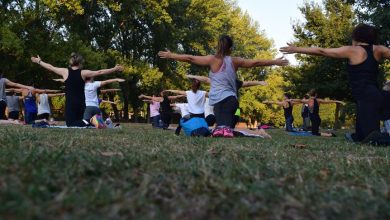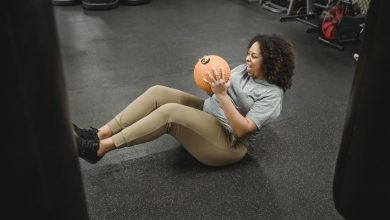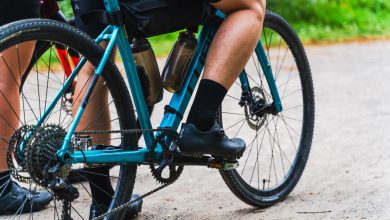Experts Reveal the Secret to Mastering Squats

Struggling with squats? Can't quite master the perfect form? Don't sweat it! In this article, experts are about to spill the beans on the secret to mastering squats. They'll guide you through overcoming tricky challenges like the notorious butt wink and keeping your spine safe. By understanding the causes and solutions for butt wink, adjusting your technique to your body, and exploring alternative variations, you'll be on your way to squatting like a pro. Get ready to crush those squats and level up your fitness game!
Key Takeaways
- Butt wink, or the rounding of the lower back during a squat, can increase the risk of injury when combined with load and flexion.
- Tight hamstrings may not be the primary cause of butt wink, as it is more likely related to squat stance and ankle mobility.
- Finding and maintaining a neutral spine, or safe to squat (STS) zone, is crucial for protecting the spine during squats.
- Each person has unique anatomy and mobility limitations, so it is important to listen to the body's feedback and make necessary adjustments during squats.
Understanding the Importance of Spine Safety
To understand the importance of spine safety, you need to be aware of the risks associated with improper squat form. Common misconceptions and squat myths can lead to potential injuries. One myth is that squatting ass to grass (ATG) is the only correct way to squat, while others believe stopping at 90 degrees is safer for the spine. The truth is, the disagreement stems from differing opinions on what is dangerous for the spine, particularly the butt wink. Butt wink refers to the rounding of the lower back during a squat. While tight hamstrings are often blamed, stretching them before squats won't necessarily prevent butt wink. It is more likely related to squat stance and ankle mobility. By debunking these myths, we can better understand how to protect our spines during squats and avoid unnecessary injuries.
Addressing Butt Wink: Causes and Solutions
To address butt wink during squats, you need to focus on improving your squat stance and ankle mobility. Here are some practical solutions to help you improve your squat form and hip mobility:
- Adjust Your Squat Stance: Find the right squat stance and foot angle that feels comfortable for you. This will help reduce butt wink and avoid compensations and posterior pelvic tilt.
- Work on Ankle Mobility: Ankle mobility limitations can force your body to compensate and rely on your lower back for range of motion. Incorporate ankle mobility exercises into your warm-up routine to improve your squat technique.
- Consult with a Professional: If you're struggling with butt wink and can't seem to fix it on your own, consider consulting with a qualified coach or physical therapist. They can provide personalized guidance and help address any individual limitations you may have.
Finding the Perfect Squat Stance and Foot Angle
Adjust your squat stance and experiment with different foot angles to find the perfect position for your squats. Many people make common mistakes in their squat stance and foot angle, which can lead to poor form and technique. To improve your squat form, start by standing with your feet shoulder-width apart and toes pointed slightly outward. This stance allows for stability and proper alignment of the knees and hips. As you squat down, focus on keeping your weight centered over your heels and maintaining a neutral spine. Avoid the mistake of letting your knees cave in or shifting your weight onto your toes. By paying attention to your squat stance and foot angle, you can improve your overall squat technique and maximize the benefits of this exercise.
Gradually Overloading: A Key to Progress
Start gradually overloading your squats by increasing the load in a controlled and gradual manner. Here are some practical tips to help you progress effectively:
- Start with a weight that challenges you but allows you to maintain proper form.
- Increase the load incrementally, such as adding 5-10 pounds per session, to gradually challenge your muscles.
- Focus on perfecting your technique before adding more weight to prevent injuries.
- Incorporate progressive modifications, such as changing your squat variations or adjusting your stance, to continue challenging your muscles.
- Listen to your body and pay attention to any discomfort or pain. If needed, seek personalized guidance from a qualified coach or physical therapist to address individual limitations.
Individual Variations and Adjustments for Success
If you experience excessive butt wink or discomfort during squats, making adjustments may be necessary. Customizing squat modifications can help address individual variations and maximize squat efficiency. Pay attention to how your body responds during squats and make necessary adjustments. If you notice excessive rounding of the lower back, reducing the depth or adjusting the stance may be helpful. Consulting with a qualified coach or physical therapist can provide personalized guidance and help address your specific limitations. It's important to remember that each person has unique anatomy and mobility limitations, so what works for one may not work for another. By listening to your body's feedback and making the necessary adjustments, you can squat safely and effectively.
Exploring Squat Variations and Alternatives
Have you considered trying different squat variations and alternatives to mix up your workout routine? Incorporating different squat variations can help target different muscle groups and cater to different body types. Here are some squat variations you can try:
- Goblet squats: This variation is great for beginners or those with limited mobility. Hold a dumbbell or kettlebell close to your chest while squatting to engage your core and maintain a neutral spine.
- Front squats: This variation places more emphasis on the quads and core. Hold a barbell in front of your shoulders, crossing your arms to support the weight.
- Split squats or Bulgarian split squats: These single-leg movements can help reduce butt wink and improve stability. Step one foot forward and lower your back knee towards the ground while keeping your front knee aligned with your ankle.
In addition to trying different squat variations, incorporating mobility exercises can also help improve your squat form. Focus on stretches and exercises that target your hip flexors, hamstrings, and ankle mobility. Remember to listen to your body and make adjustments as needed to ensure a safe and effective squatting experience.
Listening to Reader Feedback and Health Tips
When receiving reader feedback and health tips, it's important to take them into consideration and make adjustments accordingly. Exploring reader experiences allows for a deeper understanding of the challenges and successes individuals face when it comes to mastering squats. By sharing expert knowledge, we can provide valuable insights and practical solutions to address these concerns. Reader feedback provides an opportunity to learn from others' experiences and incorporate their suggestions into our own practice. It also allows us to refine and expand our expertise in the fitness field. By listening to reader feedback and sharing expert knowledge, we can create a community where everyone can learn and grow together in their fitness journey.
Unlocking the Secrets to Mastering Squats
To truly master squats, you need to understand the importance of form and the role it plays in maximizing results. Proper squat form is crucial for preventing injuries and getting the most out of your workout. Here are some key tips to unlock the secrets of mastering squats:
- Maintain a neutral spine: Keep your back straight and avoid rounding or arching it during the squat. This helps protect your spine and reduce the risk of injury.
- Engage your core: Activate your core muscles to stabilize your body during the squat. This not only improves your form but also helps to prevent injuries.
- Control your descent and ascent: Lower yourself down slowly and control your movement throughout the squat. This allows for better muscle engagement and reduces the risk of straining or injuring your muscles.
Frequently Asked Questions
How Do I Know if I Have a Neutral Spine During Squats?
To determine if you have a neutral spine during squats, pay attention to a few key signs. Look for a slight curve in your lower back, maintaining that natural arch throughout the movement. Engage your core muscles by drawing your belly button in towards your spine. This helps stabilize your spine and maintain proper alignment. Remember, core engagement is crucial for squatting safely and effectively. Practice these cues to ensure a neutral spine and protect your back during squats.
Can Stretching My Hamstrings Before Squats Prevent Butt Wink?
Stretching your hamstrings before squats won't necessarily prevent butt wink. The key to preventing butt wink during squats is maintaining proper hip mobility. Butt wink occurs when the lower back rounds during a squat, which can be risky when combined with load and flexion. Instead of focusing on hamstring stretches, prioritize finding the right squat stance and foot angle that feels comfortable. This, along with improving hip mobility, can help reduce the risk of butt wink and maintain a safe squatting technique.
What Are Some Common Compensations That Can Occur During Squats?
During squats, common compensations can occur if your form is not correct. These compensations may include rounding of the lower back (butt wink), shifting of the weight to one side, or leaning too far forward. It's important to focus on maintaining proper form to avoid these compensations and reduce the risk of injury. Keep your spine neutral, engage your core, and distribute the weight evenly through your feet. Practice squatting with good form to build strength and stability.
How Can I Safely Increase the Load on My Squats Without Risking Injury?
To safely increase the load on your squats without risking injury, start by focusing on squatting with proper form. Find the right squat variation that works for you, whether it's back squats with small plates under your heels or goblet squats. Progress gradually and listen to your body's signals. If you experience discomfort or excessive butt wink, make adjustments like reducing the depth or adjusting your stance. Remember, comfort and pain-free movement are your best guides for squat alternatives.
Are There Any Alternatives to Back Squats That Can Help Reduce Butt Wink?
To reduce butt wink and avoid injury, try incorporating alternative exercises that target your hips and improve mobility. Goblet squats and front squats can be great alternatives to back squats, as they activate the core and maintain a neutral spine. Additionally, single-leg movements like split squats or Bulgarian split squats can help reduce butt wink. Remember, everyone's body is different, so listen to your body's feedback and make necessary adjustments to squat safely and effectively.



